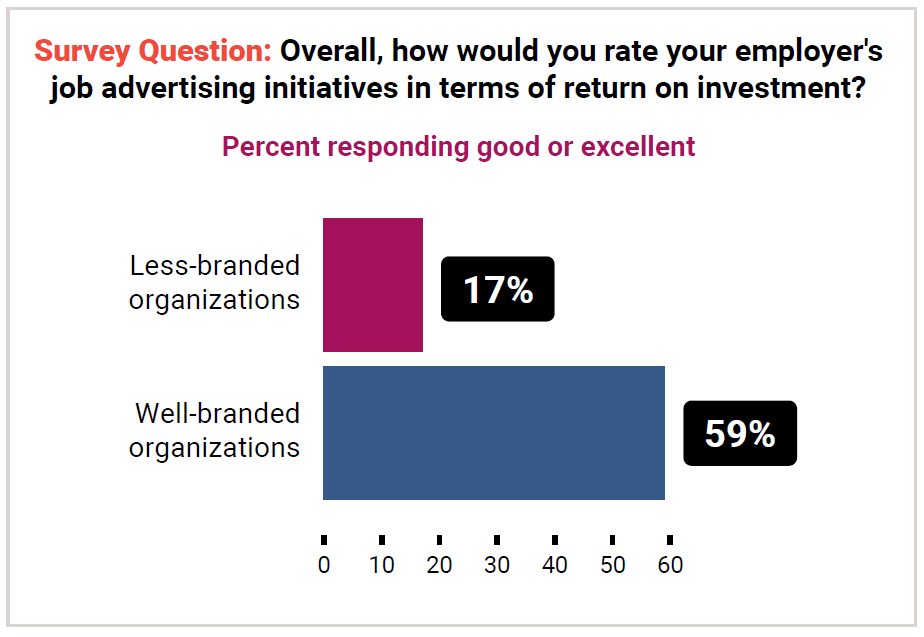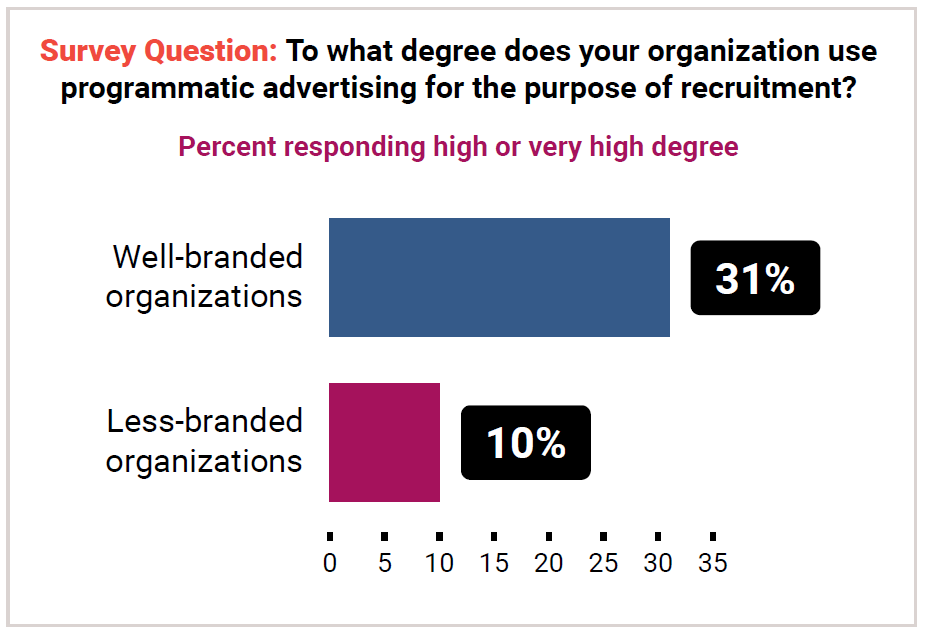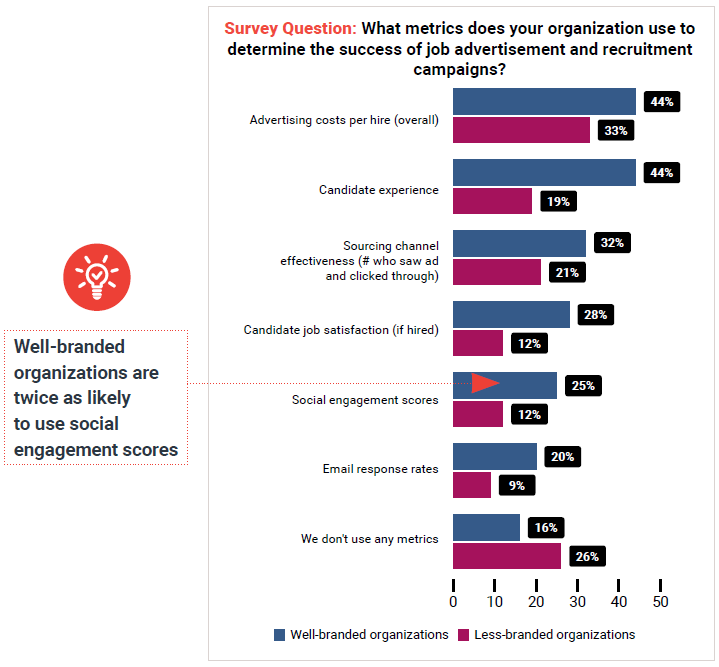For this part of the report, we investigated how our well-branded cohort (those with a brand that excelled at attracting high-quality candidates) differ from our less-branded cohort, when it comes to recruitment advertising.
Of course, correlation is not the same as causation. While we cannot state that any given practice will lead to recruitment advertising success, we do see intriguing relationships that might result in greater effectiveness.
Well-branded organizations are more likely to report that their job advertising initiatives result in a good or excellent return on investment
Nearly two-thirds of well-branded organizations report that their job advertising initiatives deliver a good or excellent ROI. By comparison, just 17% of less-branded organizations say the same.
Well-branded organizations are more likely to use programmatic advertising
Programmatic advertising is an automated way of displaying ads to specific candidate segments that you wish to target. This pay-forperformance advertising technique relies on artificial intelligence and allows for real-time bidding for online display, social media advertising, and other types of ad campaigns.
We found that well-branded organizations are three times more likely to use programmatic advertising (31% vs. 10%). However, it is worth noting that nearly a third of both the well-branded and less-branded organizations do not use any programmatic advertising.
Well-branded organizations are more than twice as likely to track candidate experience
While the majority of organizations from both cohorts use metrics to determine the success of their recruitment advertising initiatives, respondents from well-branded organizations are considerably more likely to say that they use certain metrics, including advertising costs per hire, candidate experience, sourcing channel effectiveness, candidate job satisfaction (if hired), social engagement scores, and email response rates.


